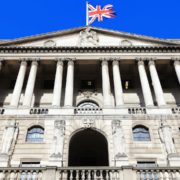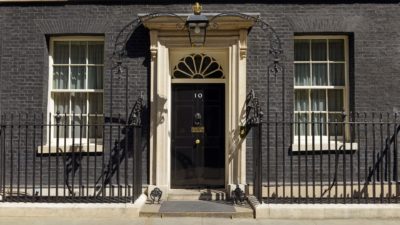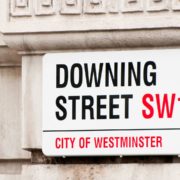In my last two columns here, I have described how the mortgage rate outlook has gone from bad to worse, on the back of figures showing that inflationary pressures in the UK are proving decidedly sticky.
Inflation figures for June will be published next week but, in the meantime, we have had data on wages, showing annual regular pay growth at 7.3%, equalling the highest in this sequence.
Anybody who hoped that last month’s half-point Bank Rate rise to 5% might mean that there would be no need for another hike in August has been disappointed.
The debate is now about whether a quarter-point will be enough then, or whether another half will be delivered. There is, in other words, apparently no end yet in sight to the interest rate pain.
The Bank, of course, has more than one responsibility. It is supposed to keep inflation at 2%, something it has not done since the spring of 2021, more than two years ago. It also has to ensure the stability of the financial system. Its Financial Stability Report and bank stress tests, just published, seek to ensure the second objective is met.
The bank stress tests are not for the faint hearted. The Bank has worked out that the banks could cope with persistently high inflation, averaging 11% over three years and peaking at 17%, an unemployment rate of 8.5% (compared with 4% now) and a 31% drop in house prices.
The only thing odd about its stress tests is that they are based on Bank Rate rising from under 1% to 6%. That may be on the cards anyway, or at least markets think so, without the scary inflation numbers in the stress test.
The Bank has also published its Financial Stability report, which lays bare the impact of higher mortgage rates.
As it puts it: “The majority of mortgages taken out over recent years have been at a fixed interest rate for a period of time (most commonly two or five years), so higher interest rates affect mortgagor households in aggregate with a lag.
Around half of mortgage accounts (around 4.5 million) are estimated to have seen increases in repayments since mortgage rates started to rise in late 2021. And higher rates are expected to affect the vast majority of the remainder by the end of 2026 (around 4 million accounts).”
The average increase in monthly mortgage payments is £200, though a significant proportion face payment increases of £500 or more.
The Bank also expects that mortgage pain, defined as the proportion of income UK households spend on mortgage payments, will be lower than the previous peak in 2007. That may be less reassuring than it sounds, both because the pain is spread over a smaller number of households now, and because it can only take account of quoted mortgage rates at the time it prepared its report, since when they have gone up further, and may rise again.
The Bank’s report also spends some time looking at the implication of higher rates for landlords. They, it notes, and as readers of this well be fully aware, “are currently subject to a combination of factors that are putting pressure on their profitability: higher interest rates and structural changes – including adjustments to income and capital gains tax rules and proposed changes to building energy efficiency regulations and tenancy protection”.
It uses the interest-coverage ratio, rental income relative to interest payments, as a measure of the financial stress likely to be faced by landlords.
They face similar pressure to households, though with an additional factor. As well as having to refinance at higher rates, most buy-to-let mortgage are interest only, “which increases the relative impact of higher rates”. So the average increase in monthly payments for landlords by the end of 2025 is projected to be about £275. The same health warnings about these projections apply as for households.
In the absence of rent increases, the share of buy-to-let mortgages with interest-coverage ratios below 125% would increase from 3% to 40%. “Many landlords are likely to seek to raise rents to offset their higher costs, it says.
“National rent inflation in the private rental market was 5% year-on-year to May, with one industry estimate indicating a 10% price increase in new lets in the year to June. Renter households tend to have lower incomes than homeowners (including relative to housing costs) and they are likely to have low savings.
Higher costs relative to incomes may lead to an increased reliance on consumer credit, or difficulties paying off existing consumer credit or other types of debt. It may also increase their vulnerability to future adverse shocks.”
So it is not easy, but are landlords exiting the market in large numbers? The Bank does not think so, even though falling profitability and other changes might give them an incentive to do so.
It thinks that larger-scale professional landlords are buying even as smaller landlords sell.
Sales by private landlords last year were likely to have been less than 100,000 it thinks, representing 8% of property sales and 0.4% of the housing stock.
That, of course, was before we were fully aware of the full extent of the mortgage shock.
Is the Bank being too reassuring? We shall see in coming months.


























No mention of s24 tax implications in the report?
BoE seems to be totally myopic ne blind about the plight of landlords.
Potential top rates of tax on rental income if held in personal names will be 45%
If held in company then up to 25% corporation tax + 39.35% dividend = 64.35% !!
If you sell the 28% capital gains tax.
If you buy then…if you can get a mortgage…3% additional stamp duty.
New impending EPC rules cost around £14,000 per property to comply with.
And the pièce de résistance… Renters Reform Bill where:
1. No fault evictions being banned…only real recourse is to sell the property.
2. New ombudsman, yet more costs for the landlord.
3. Landlords register…aka targets on landlords for extortion.
4. Net zero compliance.
5. Rent rises capped.
How does the BoE think ‘bigger’ landlords will be buying more?!
Why would anyone want to be a landlord?
This is a massive housing crisis on a scale not seen before.